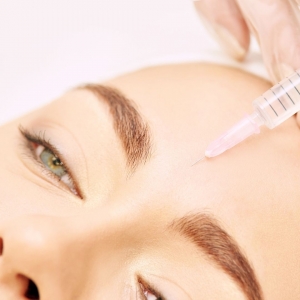Perlane is a dermal filler that was created to minimise the appearance of facial folds and wrinkles. In many cases it is capable of complete wrinkle removal since it restores a great deal of lost facial volume. As the skin ages the natural collagen present begins to diminish. Over time this will sometimes result in sagging skin, facial folds, lines, and wrinkles.
facial volume. As the skin ages the natural collagen present begins to diminish. Over time this will sometimes result in sagging skin, facial folds, lines, and wrinkles.
Perlane is made of a stabilized hyaluronic acid gel that has particles thicker than those of other hyaluronic acid based fillers such as Restylane. The denser composition allows it to be more easily moulded to a patient’s face and thus produces the most natural look possible of all the hyaluronic acid based dermal fillers. Because it is not derived from animal sources like many collagen based fillers are, it may be used in patients without allergy testing. Perlane is made entirely of hyaluronic acid while other dermal fillers such as Restylane have a hyaluronic acid base but have animal collagen added to them.
Perlane may be used in a variety of facial areas. The nasolabial folds running from the corner of the nose to the outer edges of the mouth are one of the most common areas that patients have injected. It may also be used to add some volume to the area underneath the eyes if a patient has sunken eyes. Virtually any area of the face that has wrinkling or skin folds due to loss of volume can be treated effectively with injections. A popular use for this product today is lip enhancement. Perlane can be safely injected into the lips to produce additional volume or create the appearance of an overall larger mouth.
Perlane typically lasts for about six to nine months, though some patients continue to see benefits from treatment for as long as one year. While the price is typically higher than that of some other dermal fillers, this product is longer lasting and presents a more natural appearance than other dermal fillers do.
Treatment with Perlane normally takes no longer than 30 to 45 minutes. The injection process is usually not painful for patients though the administering physician may choose to inject a local anesthetic or to apply a topical anesthetic to minimise any discomfort.











